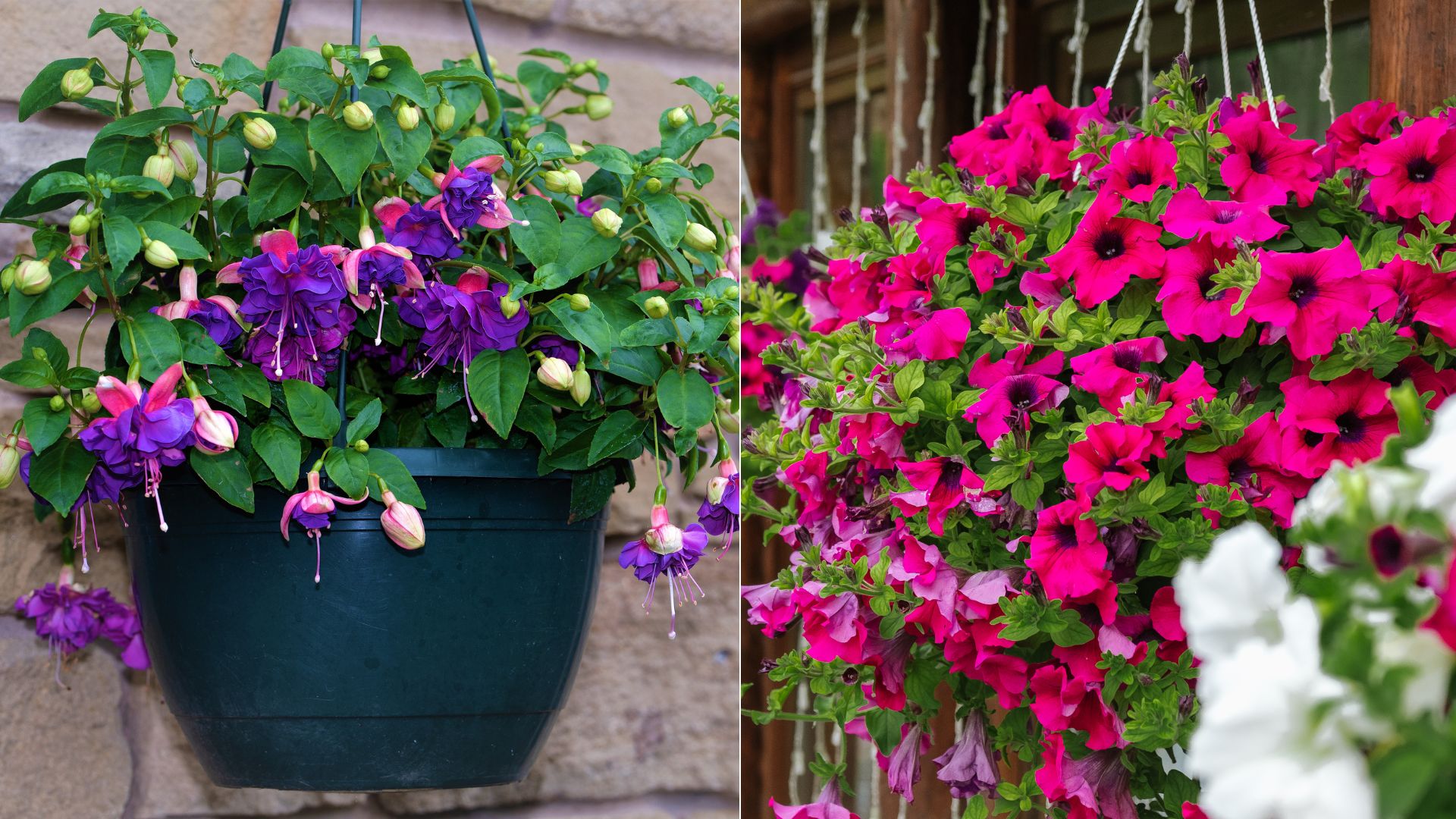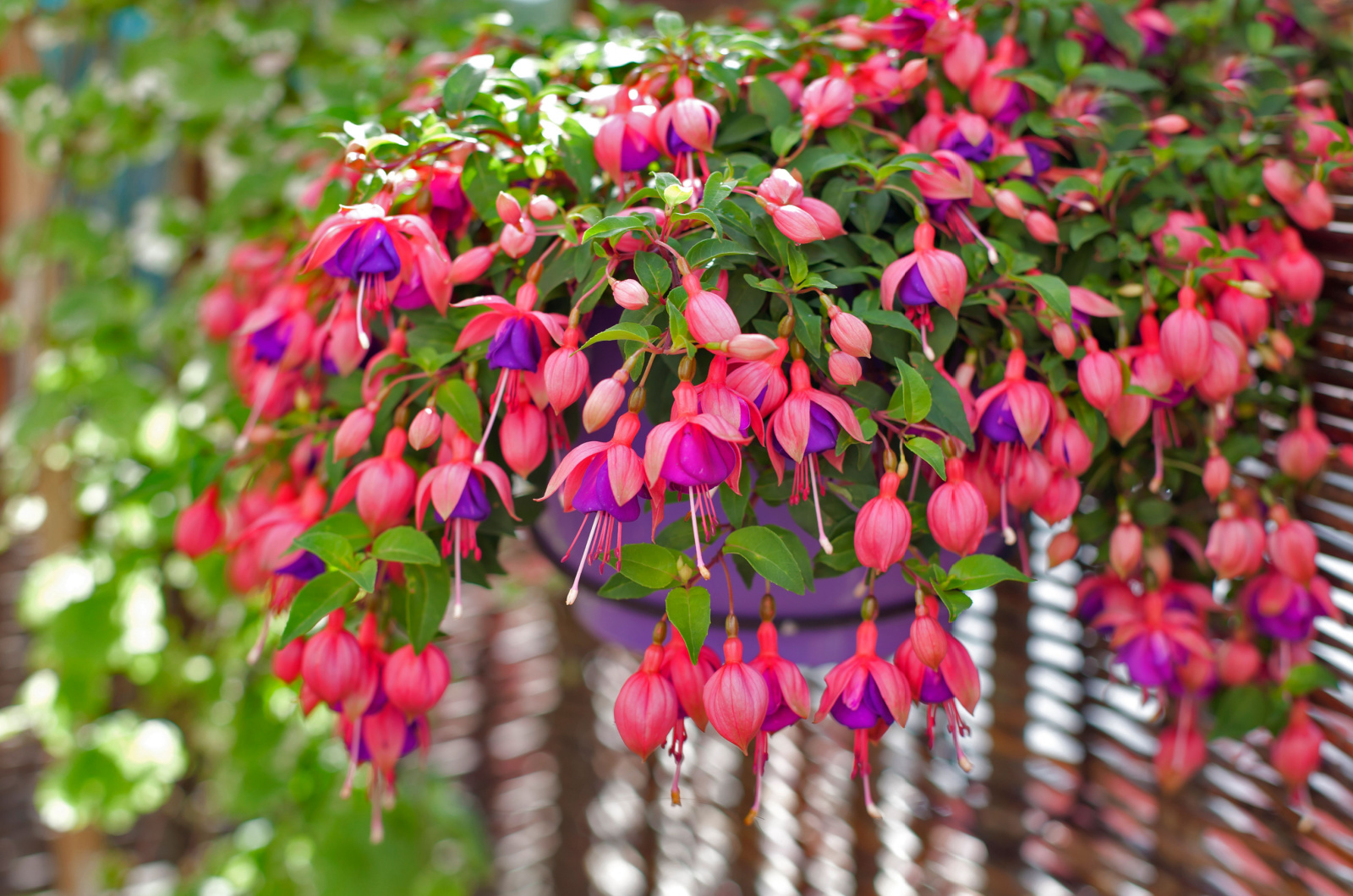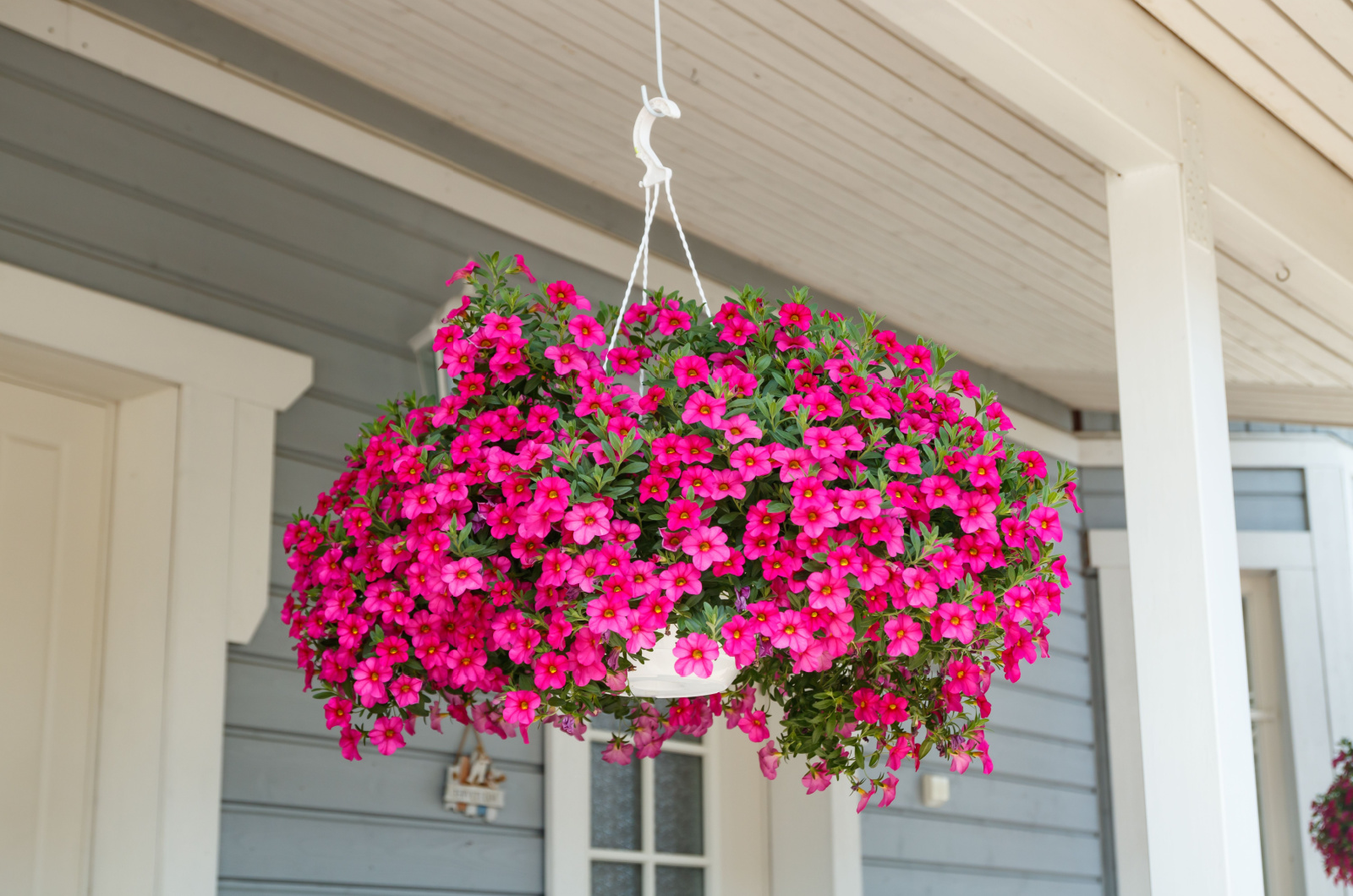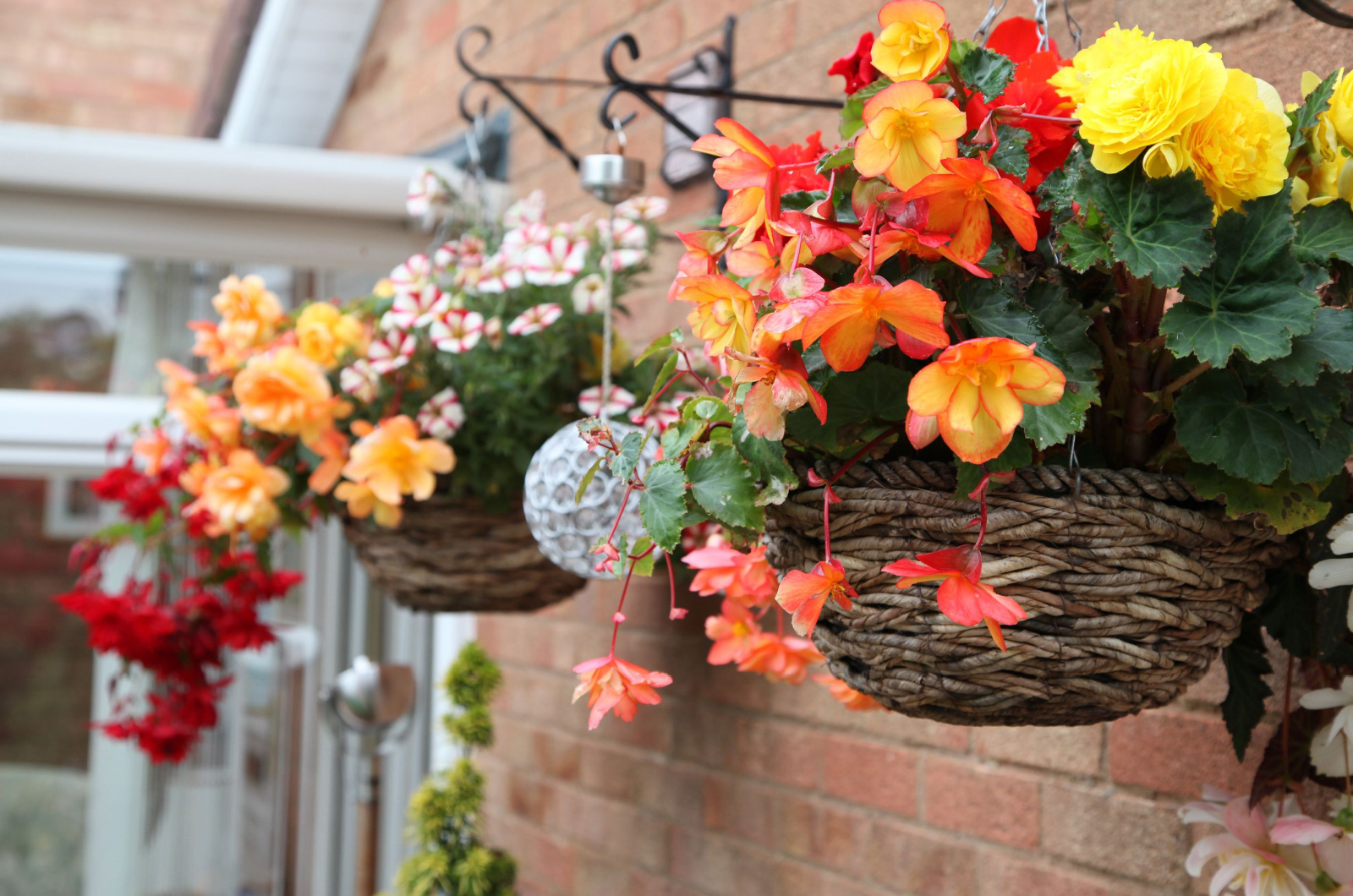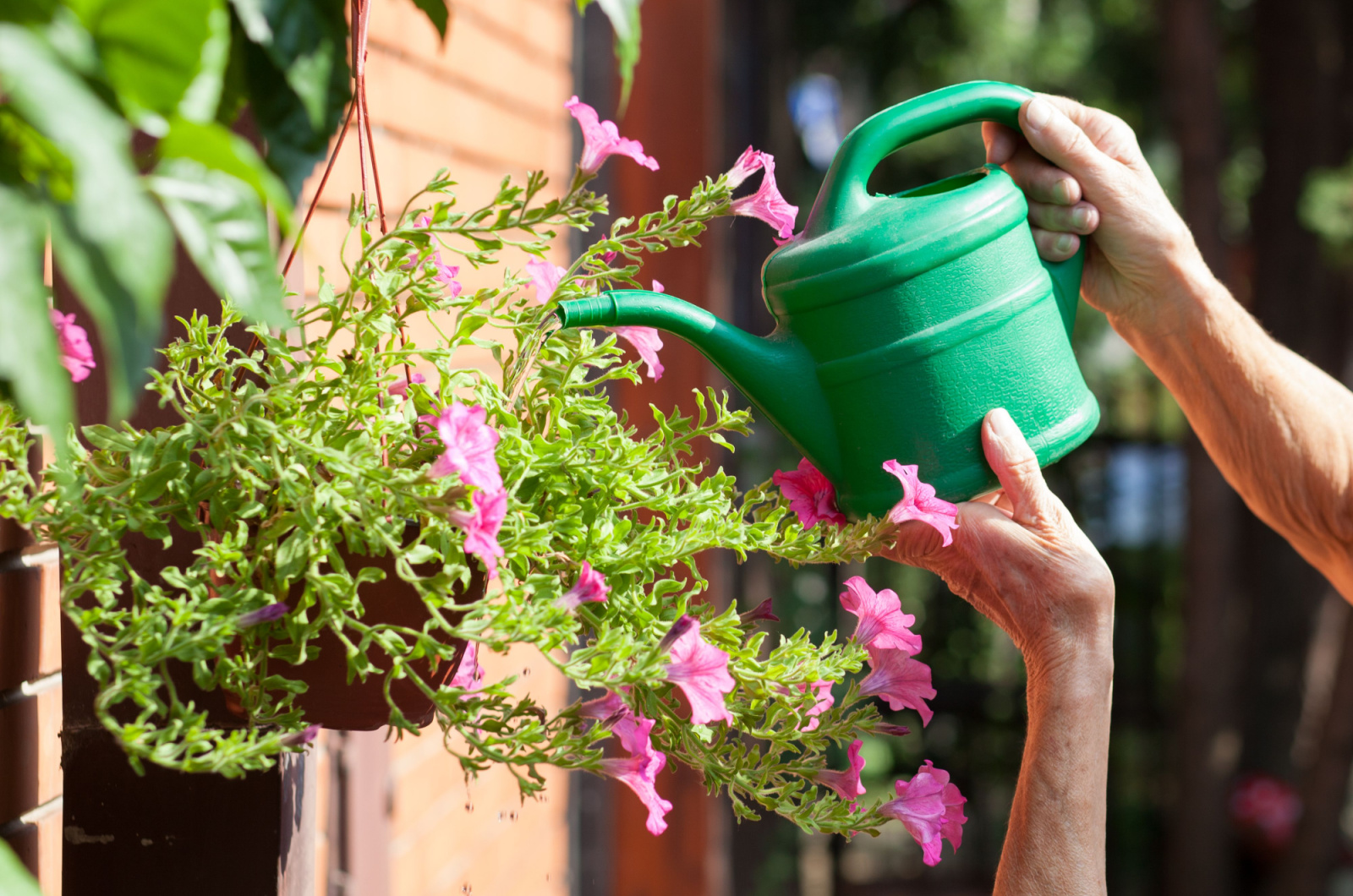Some plant lovers don’t have enough space to fit all the green friends they plan on adding to their collection. This is where hanging baskets step in. The other reason why growers use them is because they’re tired of standard floor-standing planters.
No matter the reason you decide on them, you must admit that plants grown this way look breathtaking. But choosing the best plants for hanging baskets isn’t really an easy task.
Technically you can grow almost all plants in these planters, but if you want to make the best out of it, you should go with trailing species.
I’ll show you my favorites and give you some ideas on making or using hanging baskets.
Let’s get started!
How To Choose Plants For Hanging Baskets
If you have a hanging container in front of you and you ask yourself which plant to put in, consider a few factors.
The first one is the type of plant. As mentioned, trailing species perform best in these planters so first check the growth habit of the plant you want to add.
Then, consider the color; if you would like to add a splash of color to your outdoor space, then go with colorful flowering annuals.
If you prefer foliage plants, I recommend choosing ones with smaller leaves for better effect.
Of course, we don’t choose our plants only based on their appearance. Always pay attention to the care requirements of a specific plant as well as its size and how fast it grows.
Here are my 5 top picks!
1. Fuchsia
Plants from the Fuchsia genus are commonly grown in hanging baskets because of their trailing growth habit and, of course, captivating appearance.
There are numerous varieties to choose from and I’m sure you won’t have problems finding one for yourself. I believe the main problem is to stop at one!
Another amazing Fuchsia feature is that its blossoms are magnets for hummingbirds, so your garden will be enriched with these magical creatures.
The only drawback is that these plants aren’t really easy to maintain, which is why I always recommend them to growers who have more time to spend caring for their green buddies.
The biggest problem is probably the watering since Fuschias are heavy drinkers and may require daily watering during hot summer months.
2. Petunia
Petunias and hanging baskets are the best combo ever! The trailing varieties of these plants come in multiple colors and they even emit a sweet fragrance.
The best thing about petunias is that their blossoms last all summer long so you’ll have a splendid garden display for a long time.
These plants aren’t too fussy over the growing conditions; they’ll flourish as long as you provide them with enough full sun, feed them approximately twice a month, and water them weekly.
3. Calibrachoa
If you aren’t familiar with the name Calibrachoa, maybe Million Bells rings a bell (no pun intended).
This plant is prized for its adorable tiny blossoms that develop into clusters; they pair perfectly with foliage. You have many options to choose from when it comes to color: violet, blue, bright pink, and brownish-orange.
You can keep only Calibrachoas in your hanging containers or mix them with other trailing species to get an even better effect.
These plants also need frequent watering, especially during hot summer days when the soil dries out quickly. Put your Million Bells in a sunny spot and water daily for the best results.
4. Ivy Geranium
The most common flowering plants you’ll notice in hanging baskets are Ivy geraniums. These species generate wonderful ivy-shaped leaves and clusters of vibrant blossoms.
Ivy geraniums are one of the longest-blooming perennial plants so your garden will look fantastic during the summer.
These plants also attract hummingbirds and butterflies so get them if you want to have a pollinator-friendly yard.
5. Begonia
I often call Begonias old-school plants because they have adorned gardens worldwide since, well, forever. Trailing Begonia species come in multiple colors and look breathtaking when grown in hanging containers.
If you have a spot in your garden that doesn’t receive full sun, put these plants there because the leaves may burn if exposed to direct sunlight.
This is actually my favorite thing about Begonias because they thrive where most other flowering plants wouldn’t.
DIY vs Store-bought Hanging Baskets
When you visit a nursery store, you’ll notice that you can choose between empty hanging baskets or ones that already have plants in them.
I have to admit that I’m often tempted to purchase the ‘full ones’. But making my own mixes is my cup of tea.
If you already have some gardening experience, you can start some annuals from seeds. But if you’re a beginner and a very impatient one, you should go with transplants because you’ll get the flowers in no time.
You can also take things to another level and plant some edibles in your hanging containers. For instance, you can start some tomato varieties, such as Tumbling Tom, indoors in February, and then replant them into your hanging baskets.
Strawberries also perform well in these types of planters. You will not only get the delicious fruits but also a splash of color! Additionally, the snails and slugs that adore these tasty fruits won’t be a problem anymore.
Caring For Hanging Baskets
The last thing I would like to share with you is a guide on how to care for your hanging containers.
The essential thing about these planters is that they must be hydrated all the time. Remember that they don’t contain a lot of soil and they dry out fast, so frequent watering is the best way to keep them healthy.
They’ll benefit most if watered on a daily basis during hot summer months. You can add compost and other water-retaining materials to decrease the water evaporation rate.
Feeding will also help your hanging baskets to bloom for months so add fertilizer each week.
You can encourage more blossoms by deadheading, i.e., removing spent flowers to extend the season.
Growing plants in hanging baskets isn’t rocket science but for the best results, you should select suitable species and meet their care requirements. You’ll be rewarded with the most beautiful garden display you could ever imagine!

